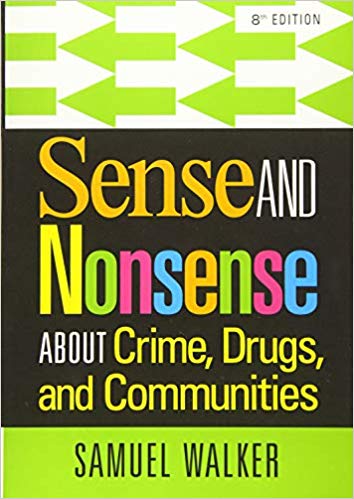Description
Sense And Nonsense About Crime, Drugs, and Communities, 8th Edition by Samuel Walker – Test Bank
Okay, real talk — if you’re taking a criminal justice or sociology class that uses Sense and Nonsense About Crime, Drugs, and Communities (8th Edition) by Samuel Walker, you’ve probably already figured this out:
It’s not the kind of book you can skim the night before the quiz and hope for the best.
It’s thought-provoking, yes. But also dense. Full of stats, theories, opinions, policies, and some chapters that feel like they were written just to test your patience.
So yeah, it makes sense that the test bank for this book is kind of a hot item right now. Especially if you’re juggling other classes, a job, or just trying to keep your GPA from doing a faceplant.
Why the Test Bank Matters
Let’s get this out of the way: this test bank isn’t magic. It won’t do your homework for you or give you a degree in criminal justice overnight.
But what does it offer? A serious leg up.
Here’s what usually comes with the Sense and Nonsense 8th Edition test bank:
- Multiple-choice questions from each chapter
- True/false and short-answer practice sets
- Question styles that mirror the ones you’ll see on quizzes and exams
- An answer key (which is a lifesaver when you second-guess everything)
It’s like getting a behind-the-scenes look at the kinds of questions your professor might toss your way. And honestly, that’s half the battle.
You Know What’s Weird?
The book itself is super opinionated, which is cool, don’t get me wrong. But sometimes it’s hard to figure out what the right answer is, especially when Walker presents two opposing views and kinda just… lets them both hang there.
So when your test question is like, “Which of the following is a myth about community policing?” it helps to have already seen how the concepts are being framed.
I’m telling you — the test bank helps you read the book more strategically. Less highlighting random paragraphs. More actually getting what’s going to matter on the exam.
Should You Use It? (Let’s Be Honest Here)
Personally? I’d say yes — if you’re using it the right way.
Here’s how I used mine:
- I’d try to answer the questions after reading the chapter
- Then I’d check my answers and see where I went wrong
- If something felt off, I’d go back to the book and dig deeper
It’s not cheating. It’s studying smarter — with a bit of a safety net.
This one? Totally worth it, in my opinion.
Where to Find the Test Bank Without Getting Burned
Not gonna lie — the internet’s full of sketchy download sites. And a lot of them are garbage. Wrong edition, missing chapters, or full of typos that’ll make you question your life choices.
Here’s what’s worked for me and people I know:
- Ask your professor (some give access to test banks for review)
- Check your university library or digital learning portal
- Use reputable academic platforms that offer verified materials
- Talk to classmates — somebody always has a copy floating around
Just don’t download random PDFs from sites that look like they haven’t been updated since 2007. Not worth the risk.
Let’s Wrap This Up
If you’re feeling overwhelmed by all the crime stats, community policies, and legal theories in Sense and Nonsense About Crime, Drugs, and Communities (8th Edition)… you’re not the only one. It’s a great book, but it’s a lot.
The test bank? It’s like having a study buddy who actually knows what’s on the test.
Use it well. Don’t rely on it blindly. And trust me, your future, slightly-less-stressed self will thank you.

Reviews
There are no reviews yet.